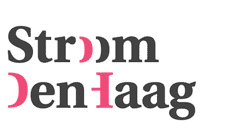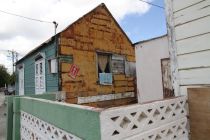Ondertussen: Ruben La Cruz and Karolien Helweg
Architecture of Poverty, in the Kingdom
24 March thru 13 May2012
Location: Hogewal 1-9, The Hague
Open: Monday-Friday: 11 am-5 pm; Saturday-Sunday: 12 noon-5 pm
In the fall of 2010 - just before the dissolution of the Netherlands Antilles - Ruben La Cruz and Karolien Helweg embarked on a research trip to the six islands of the Kingdom of the Netherlands in the Caribbean Sea: the Leeward Antilles (Sint Maarten, Sint Eustatius and Saba) and the Lesser Antilles (Aruba, Bonaire and Curaçao).
The main purpose of their journey was to look for new and old examples of the so-called ‘architecture of the poor'. They were especially interested in the metal-clad little houses in Curaçao. This type of housing first originated when Royal Dutch Shell established an oil refinery on the island at the start of the 20th century. The houses were built with scrap material from the refinery, like wood from formwork and discarded kerosine drums. The architecture, the use of material and the precision with which the houses were constructed is truly unique. Surprisingly enough there has been little or no research into this form of architecture. In the mean time most of these houses have gradually disappeared from the urban landscape, because they are associated with poverty by the local population. Ruben La Cruz and Karolien Helweg decided to make an inventory of all remaining tin houses and to research their history, background and current use.
On the island of Curaçao they managed to document 62 of these little houses, all of them entirely or partly clad in metal. On Bonaire they found two more houses, but on Aruba nothing at all remained. On the other islands they also documented examples of ‘architecture of poverty'. Due to historical factors, cultural differences and influences, and immigration processes the architectural styles differ from island to island. One of the recurring styles is the ‘cottage' style, imported by the first settlers from Europe. La Cruz and Helweg hope that their research will contribute to a better understanding and appreciation of this important architectural heritage.
The results of their (first) research trip are presented in this Ondertussen presentation. For this project Ruben La Cruz received a PRO Research subsidy.
www.lacruzhelweg.nl
PRESS
Amigoe - Curacao, 22 March 2012
Ondertussen
The former reception area of Stroom has been converted into a small
exhibition space. On a regular basis there are presentations of artists
who have received a subsidy in the categories Stroom PRO- and
SPOT-grants. The informal exhibitions and presentations are intended to
illustrate the diversity of the Stroom grant system. The program in the
space is called Ondertussen (Meanwhile).
Archive
Ondertussen presentations
- 24 Mar '12 - 13 May '12
- Hogewal 1-9, The Hague
- Entrance: free


















